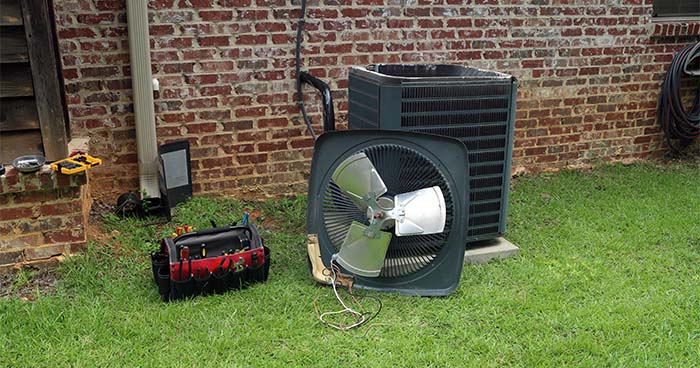Technology and innovation keep improving, offering multiple ways to maximize efficiency in our daily lives. Despite all these advances, however, many homeowners are still slow to make the move to greener appliances and practices.
Here’s how you can make small changes with big impact to improve your home’s efficiency and reduce your carbon footprint.
Energy Efficiency in the Kitchen
Increase Refrigerator Temperature Settings
A refrigerator’s default temperatures are typically cooler than need be, consuming energy and raising your bills unnecessarily. If you know how to turn the temperature down in your refrigerator and freezer, reduce them to 37 degrees and 0 degrees respectively. This is enough to keep your food safe without causing your bills to skyrocket.

Invest in ENERGY STAR Appliances
ENERGY STAR appliances significantly improve your energy efficiency and lower your utility bills without leaving you with outdated features and functionality. Combining the best of modern features with energy efficiency, ENERGY STAR refrigerators offer about 9% efficiency increase over comparable brands.
Use the Burner Wisely
Your stove has small and large burners to suit different pot sizes. If you have an electric stove, you may also have large burners with smaller interior burners and different knobs, so you can cook with a medium-sized pot. It’s important to use the appropriate burner for your cookware’s size to reduce unnecessary energy waste and lower your bills.

Turn Off the Ice Maker
While you may like having a constant supply of ice in your freezer, automatic ice makers can increase a refrigerator’s energy use up to 20%. They also waste water. You may want to turn your automatic ice maker off and switch to old-fashioned refillable ice cube trays to reduce your overall energy use.
Wash Your Laundry in Cold Water When Possible
According to Treehugger.com, 90% of the energy used by your washer is from heating the water, while the other 10% is to run the machine. Giving those numbers, think of how much energy you could save by washing your clothes in cool or cold water instead of hot.
Energy Efficiency in the Bathroom
Install a Low-Flow Showerhead
A normal showerhead uses about 5 gallons of water per minute. Over a 10- or 15-minute shower, that’s a LOT of water wasted. Low-flow showerheads have a flow rate of less than 2.5 gallons per minute, which gives you a pleasant shower experience with much less water waste.

Turn Off Unnecessary Water
Running water waste isn’t just in the shower – your sinks waste a lot of water when you leave water running for no reason. While you’re shaving, brushing your teeth, washing dishes, or cooking, make sure you turn off the water when you’re not using it. This small step makes a huge difference in conserving water and can result in about $170 a year in savings, according to the Environmental Protection Agency (EPA). You should also consider taking more showers instead of baths, which can save over 50 gallons of water.

Replace Incandescent Light Bulbs with Compact Fluorescent Lamps (CFLs)
Incandescent bulbs were discontinued in 2014, so many homes still have them. Modern, energy-efficient bulbs like compact fluorescent lamps (CFLs) offer effective lighting with lower energy consumption. With around 40 bulbs in your home, switching to CFLs can make a big difference in your electric bills.
Energy Efficiency in the Home
Schedule Regular Tune-Ups for Your HVAC System
HVAC systems, like other appliances, don’t run as efficiently when they’re older or worn out. If you’ve gotten behind on your HVAC maintenance, schedule a tune-up to keep your system running more efficiently.

Assess Your Insulation and Consider Investing in New or Better Insulation
Insulation prevents the flow of air inside and outside, keeping your home comfortable despite the exterior temperatures. Whether it’s your heat or air conditioning, having air escaping your home can increase your energy bills and compromise your home’s comfort. If you have old or ineffective insulation, consider replacing it with newer and more efficient insulation.

Lower Your Thermostat
Lowering your thermostat’s temperature when you’re out or at work can make a big difference in your energy costs. You should lower the temperature by at least a few degrees when you’re not home, but if you can lower it by 10 or 15 degrees, that can translate to 5 to 15% in savings each year, according to Energy.gov.
Weather Seal, Update, or Replace Your Windows
Older or damaged windows can leak air and heat, reducing the comfort of your home and impacting your utility bills. If your windows are outdated or damaged, consider replacing them. If there are minor issues, such as cracks around the edges or gaps in the frame, you can use weatherstripping and caulking to prevent leaks.
Start a Compost Pile
Starting your own compost helps you reduce yard and food waste and creates an excellent fertilizer for your garden. Here’s how:
- Create your compost heap in an open, level area with good drainage.
- Add organic material to the compost, starting with the bulkiest layer first. Alternate layers between nitrogen greens and carbon browns.
- Avoid composting animal or human waste, fats, oils, and meat or dairy products, and diseased plants.
- Rotate your compost regularly to mix it and speed up the decomposition process.








